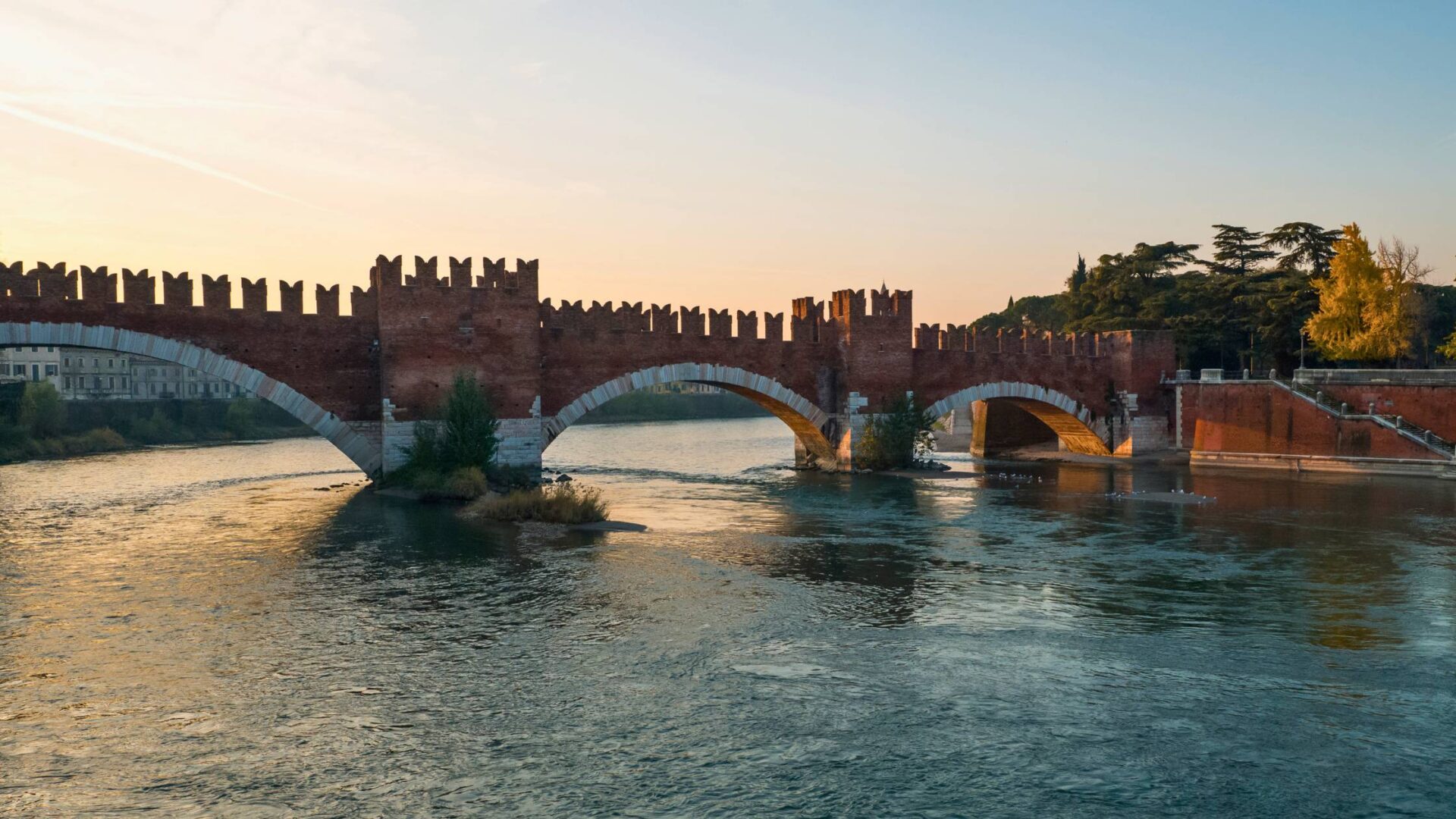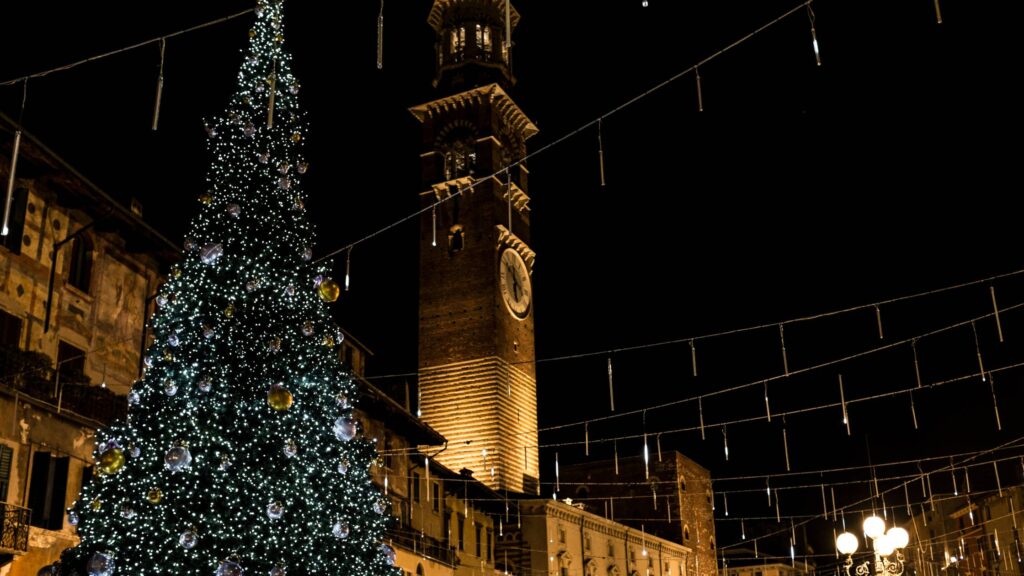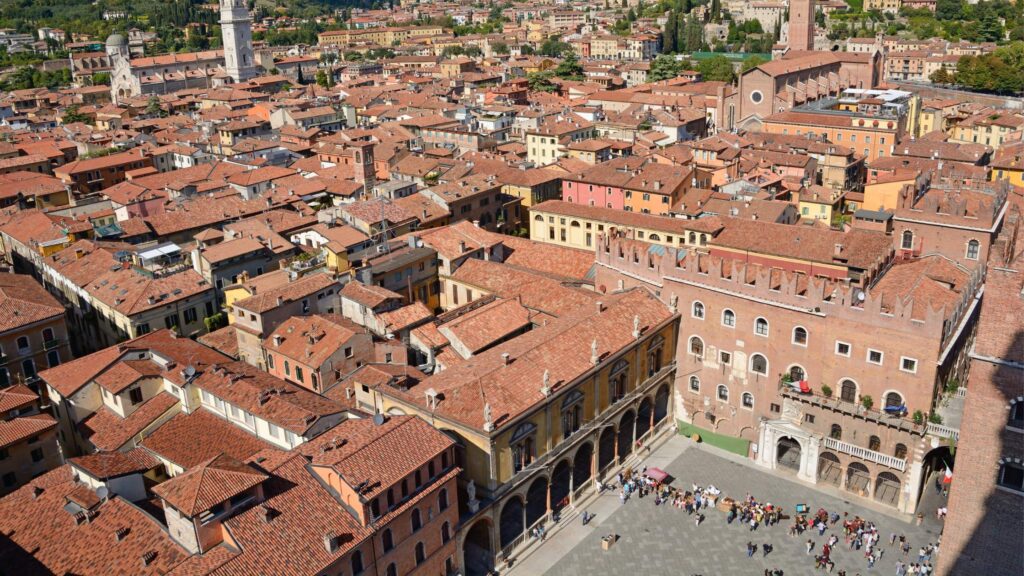What to see in Verona: 4 walking itineraries from the Colomba d’Oro

Walking through the streets of Verona from the Colomba d’Oro means taking a journey through time: beyond being celebrated in the pages of Shakespeare and other great authors, beyond being the stage where every summer every music artist dreams of performing, and beyond hosting the world famous Verona Arena Opera Festival, the city of the Colomba d’Oro is a mosaic of precious heritage from every era.
Staying in the 4-star hotel closest to the Verona Arena means experiencing one of the most beautiful cities in the world in a different, unique and intensely personal way. Are you ready? We’ve designed four itineraries, perfect for walking or having an easy ride on a bike rented at the hotel, that will guide you through Verona’s history. Let’s get started!
The Roman Footprint in Verona
Verona is second only to Rome itself for its richness of well-preserved roman remains Our journey through time could only begin with the city’s most famous landmark, the Verona Arena. Staying at the Colomba d’Oro, you will litteraly fin dit just around the corner. Once upon a time, here, an audience of 30,000 gathered to watch epic gladiatorial combats.
Our journey continues, leaving Piazza Bra and heading toward Via Roma until we reach the Arco dei Gavi, the arch erected by the powerful Gens Gavia family for their own glory. We continue, following the route of the ancient Via Postumia, and the air becomes thicker with history as we pass through Porta Borsari, once the main entrance to the Roman city. It is here that history merges with contemporary life: Piazza Erbe, now a bustling open-air market, is none other than the ancient Roman Forum. Stop here for a fine Italian coffee, soak up the atmosphere, and imagine senators and merchants exchanging goods and opinions two thousand years ago.
The journey then takes us toward the Adige river, that flows through Verona. We cross it almost imaginatively on the Ponte Pietra, the only Roman bridge to have survived time and wars. Just across the river, at the foot of Colle San Pietro hill, our last stop awaits us: the Roman Theater, an open-air archaeological site that still hosts performances in the summer as it did in ancient times.
In less than two hours, you’ve experienced Verona’s roots firsthand: isn’t this the luxury of a stay at this hotel with private parking in Verona?
Discovering Medieval Verona
Let’s leave Roman roots behind and prepare for a journey through swords, powerful lords, and Gothic art: between the 13th and 14th centuries, Verona experienced its heyday under the Scaligeri family, and their power is still etched in stone. 14th-century Verona was having a golden age. It is the same Verona in which William Shakespeare will set “Romeo and Juliet” ; and also, it is the Verona where Dante Alighieri found refuge as he was condemned to perpetual exile from his city, Florence (he lived here for about seven years, composing much of his “Paradiso” while a guest of Cangrande Della Scala). In that era, in the year 1337, our palazzo was built to house the Convent of San Donato alla Colomba (“colomba” means dove, the symbol of the Holy Spirit).
The Colomba d’Oro‘s medieval Verona itinerary begins at the Scaliger Castle, known to everyone in Verona as “Castelvecchio” (“Old Castle”), an imposing military fortress built by Cangrande II della Scala, overlooking the Adige River. Crossing its spectacular bridge gives you the first real feeling of walking in the footsteps of history.
We continue along the “Regaste,” the elevated riverside walk (panoramic to say the least) that leads us to another masterpiece off the beaten track: the Basilica of San Zeno, a gem of the Romanesque period, with its square in front, a must-see to admire architecture that has stood the test of time.
Back to the city center, prepare to climb a few steps: the 84-meter Torre dei Lamberti awaits. From the top of this tower, the breathtaking 360° view of the city is a perfect reward. And once you descend from the tower, you will find yourself in the heart of that golden age: Piazza dei Signori and the nearby Piazza del Mercato Vecchio. Here we admire the beautiful Palazzo della Ragione and Palazzo del Capitanio.
This journey ends beautifully: the Scaliger Tombs, sumptuous Gothic-style funerary monuments, a final tribute that makes visible the eternal legacy of the Lords of Verona. For the Colomba d’Oro ìs guests history is not just a memory, but a step awaiting you just outside our doorstep.
Refinement and harmony of Renaissance Verona
We now immerse ourselves in the Renaissance, a golden age when Verona became part of the powerful Republic of Venice, a time of artistic flourish and great prosperity: and the elegance of that era is visible at every turn.
We pass through Porta Palio, one of the monumental entrances to the city, and continue to the Monastery of San Bernardino, housing the works of the Veronese masters who brought prestige to the Serenissima Republic.
Walking along Corso Cavour, we admire the opulence of the noble palaces: our gaze falls on the details of Palazzo Bevilacqua and, right after, on the sober yet majestic elegance of Palazzo Canossa. It almost seems like we can hear the echoes of court receptions and balls! We then return to the heart of political and intellectual life in Piazza dei Signori, where the Loggia di Fra’ Giocondo stands out: built to house the City Council, it recalls the Classical elegance with its harmonious arches, testifying to the rebirth of the ancient ideal.
The tour ends with a masterpiece worthy of silent contemplation: the Church of San Giorgio in Braida, where you cab admire Paolo Veronese’s canvas of the Supper of Saint Gregory the Great. A sumptuous finale that caps this journey through the art, culture, and economic prosperity that Venice brought to the Veronese area.
Nineteenth-century Verona, between Austrian elegance and the spirit of the Risorgimento
The history of Verona finally leads us into the nineteenth century, a period of deep transformation, marked by the severity of Habsburg rule and the secret fervor of the Risorgimento uprisings.
Once again we start from the nearby Piazza Bra, dominated by the Palazzo della Gran Guardia, which was the nerve center of Austrian military rallies and political meetings (and today is a prestigious conference center). A few steps away, the classical elegance of Palazzo Barbieri: now the seat of the Municipality, it reminds us of the austere and refined architecture of the period.
In a few minutes, the sound of boots fades and culture takes over: we arrive at the Filarmonico Theatre, a hub of theatrical activity that, then as now, provided moments of escape and debate to Veronese society. We then cross the Adige river, perhaps from the Ponte Scaligero, and our gaze immediately falls on the Arsenale, a military complex built by the Austrians and used until the recent wars, a testament to its role as a strategic “key” to the Empire.
We decide to end our tour by seeking harmony. The strall ends at the world-famous Giusti Garden. After so much history, there’s nothing better than a little beauty!
A never-ending story: write yours at the Colomba d’Oro
In downtown Verona every street, square, and monument holds stories intertwined over time. Staying at the Colomba d’Oro is like stepping into the city’s past: honoring the stories of its past, this is the ideal haven for those who appreciate authenticity and luxurious hospitality, and are eager to embrace Verona’s rich heritage in the most elegant way – since 1837. An experience that you will keep in your heart and in your memory.
Other Offers

Christmas and New Year's Eve in Verona, just steps from the Colomba d'Oro
Between the lights of the Christmas markets, the sounds of concerts, and the city's now-famous events, such as the Rassegna dei Presepi dal Mondo (Nativity Scenes from Around the World), hosted this year at the Palazzo del Capitanio near Piazza dei Signori, Verona is the perfect destination for Christmas lovers.

Winter wellness in Verona: among ancient stones, silence, and personalized treatments
With the arrival of autumn, the city of Romeo and Juliet reveals a mysterious charm, perfect for a leisurely stroll.

The Colomba d'Oro guide to Verona's cultural treasures: love, art, music, and literature
At the Colomba d'Oro, you'll stay amid the stories of those who made Verona great.

